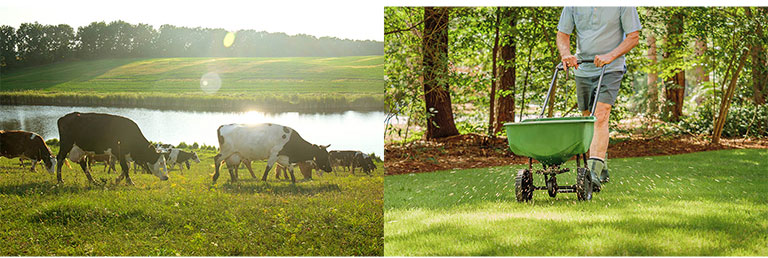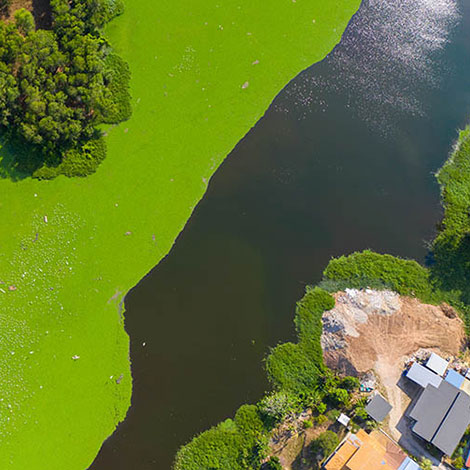Phosphorus is a nutrient that helps support the growth of aquatic plants, and it’s a natural part of an aquatic ecosystem. So why all the bad press? Turns out, human activity is increasing phosphate levels at a dramatic rate and making headlines around the world.
High levels of phosphates can cause toxic algae blooms, rampant weed growth, and overall poor water quality, which causes major disruptions to an aquatic ecosystem.
Well documented nutrient pollution can be found in Chesapeake Bay, the Mississippi River basin, and Puget Sound. Harmful algal blooms are a frequent occurrence in the Great Lakes.
While these issues may sound large and far from home, high phosphate levels are at work in smaller ponds and lakes, as well. Depending on your pond’s location and neighboring nutrient sources, phosphates might pose a very real challenge in your pond or lake.
How Phosphates Enter an Aquatic Environment
Phosphates come into the pond from leaves, twigs, grass clippings, fish waste, other organic matter and storm runoff, which carries fertilizers and other contaminants. Farm runoff, lawn fertilizers, and animal waste are among the largest contributors to extremely high levels of phosphates.

All-Natural Solution – EcoBoost PRx Controls Phosphates
EcoBoost PRx is a proprietary blend of naturally occurring phosphate binders designed to permanently bind free reactive phosphorus (FRP). EcoBoost PRx binds phosphates quickly, safely, and effectively making them unusable as a food source for weeds and algae. In addition, it clears up murky water and boosts the performance of natural beneficial bacteria.
EcoBoost PRx provides an all-natural solution for excess phosphates where there were previously only heavy metal solutions. Heavy metals (such as treatments with aluminum sulfate) negatively affect pH levels in aquatic environments.
Steps You Can Take to Limit Nutrients
- Treat your pond with EcoBoost PRx all-natural phosphate binder.
- Provide a buffer zone (we recommend 25 feet) around your pond or lake where you do not apply lawn fertilizer.
- Cut, rake and remove any dead vegetation before it can decompose and add to the nutrient load.
- Add natural bacteria treatments such as MuckAway and PondClear to lower your nutrient levels and support a thriving, balanced ecosystem.
- Add aeration to increase water circulation and oxygen saturation.

